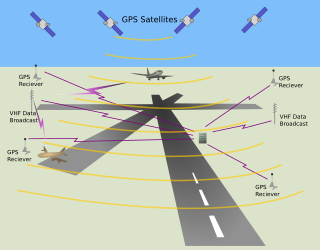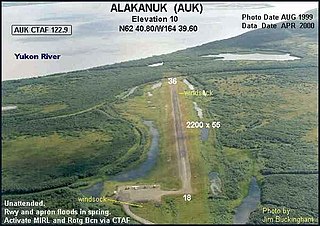Related Research Articles
The byte is a unit of digital information that most commonly consists of eight bits. Historically, the byte was the number of bits used to encode a single character of text in a computer and for this reason it is the smallest addressable unit of memory in many computer architectures. To disambiguate arbitrarily sized bytes from the common 8-bit definition, network protocol documents such as The Internet Protocol refer to an 8-bit byte as an octet. Those bits in an octet are usually counted with numbering from 0 to 7 or 7 to 0 depending on the bit endianness. The first bit is number 0, making the eighth bit number 7.

The Federal Reserve System is the central banking system of the United States of America. It was created on December 23, 1913, with the enactment of the Federal Reserve Act, after a series of financial panics led to the desire for central control of the monetary system in order to alleviate financial crises. Over the years, events such as the Great Depression in the 1930s and the Great Recession during the 2000s have led to the expansion of the roles and responsibilities of the Federal Reserve System.
In metadata, the term data element is an atomic unit of data that has precise meaning or precise semantics. A data element has:
- An identification such as a data element name
- A clear data element definition
- One or more representation terms
- Optional enumerated values Code (metadata)
- A list of synonyms to data elements in other metadata registries Synonym ring

In telecommunications, direct-sequence spread spectrum (DSSS) is a spread-spectrum modulation technique primarily used to reduce overall signal interference. The direct-sequence modulation makes the transmitted signal wider in bandwidth than the information bandwidth. After the despreading or removal of the direct-sequence modulation in the receiver, the information bandwidth is restored, while the unintentional and intentional interference is substantially reduced.

In telecommunications and computer networking, multiplexing is a method by which multiple analog or digital signals are combined into one signal over a shared medium. The aim is to share a scarce resource - a physical transmission medium. For example, in telecommunications, several telephone calls may be carried using one wire. Multiplexing originated in telegraphy in the 1870s, and is now widely applied in communications. In telephony, George Owen Squier is credited with the development of telephone carrier multiplexing in 1910.
The National Register of Historic Places (NRHP) is the United States federal government's official list of districts, sites, buildings, structures and objects deemed worthy of preservation for their historical significance or "great artistic value". A property listed in the National Register, or located within a National Register Historic District, may qualify for tax incentives derived from the total value of expenses incurred in preserving the property.

In telecommunications, broadband is wide bandwidth data transmission which transports multiple signals at a wide range of frequencies and Internet traffic types, that enables messages to be sent simultaneously, used in fast internet connections. The medium can be coaxial cable, optical fiber, wireless Internet (radio), twisted pair or satellite.

A cellular network or mobile network is a communication network where the link to and from end nodes is wireless. The network is distributed over land areas called "cells", each served by at least one fixed-location transceiver. These base stations provide the cell with the network coverage which can be used for transmission of voice, data, and other types of content. A cell typically uses a different set of frequencies from neighboring cells, to avoid interference and provide guaranteed service quality within each cell.

In data transmission, parallel communication is a method of conveying multiple binary digits (bits) simultaneously. It contrasts with serial communication, which conveys only a single bit at a time; this distinction is one way of characterizing a communications link.
The National Bridge Inventory (NBI) is a database, compiled by the Federal Highway Administration, with information on all bridges and tunnels in the United States that have roads passing above or below them. That is similar to the grade-crossing identifier number database, compiled by the Federal Railroad Administration, which identifies all railroad crossings. The bridge information includes the design of the bridge and the dimensions of the usable portion. The data is often used to analyze bridges and to judge their condition. The inventory is developed for the purpose of having a unified database for bridges to ensure the safety of the traveling public, as required by the Federal Aid Highway Act of 1968. It includes identification information, bridge types and specifications, operational conditions, bridge data including geometric data and functional description, and inspection data. Any bridge more than 20 ft long used for vehicular traffic is included.

The local-area augmentation system (LAAS) is an all-weather aircraft landing system based on real-time differential correction of the GPS signal. Local reference receivers located around the airport send data to a central location at the airport. This data is used to formulate a correction message, which is then transmitted to users via a VHF Data Link. A receiver on an aircraft uses this information to correct GPS signals, which then provides a standard ILS-style display to use while flying a precision approach. The FAA has stopped using the term LAAS and has transitioned to the International Civil Aviation Organization (ICAO) terminology of Ground-Based Augmentation System (GBAS). While the FAA has indefinitely delayed plans for federal GBAS acquisition, the system can be purchased by airports and installed as a Non-Federal navigation aid.
In communications or computer systems, a configuration of a system refers to the arrangement of each of its functional units, according to their nature, number and chief characteristics. Often, configuration pertains to the choice of hardware, software, firmware, and documentation. Along with its architecture, the configuration of a computer system affects both its function and performance

The US National Center for Atmospheric Research is a US federally funded research and development center (FFRDC) managed by the nonprofit University Corporation for Atmospheric Research (UCAR) and funded by the National Science Foundation (NSF). NCAR has multiple facilities, including the I. M. Pei-designed Mesa Laboratory headquarters in Boulder, Colorado. Studies include meteorology, climate science, atmospheric chemistry, solar-terrestrial interactions, environmental and societal impacts.

Wainwright Airport is a public use airport located in Wainwright, a city in the North Slope Borough of the U.S. state of Alaska. The airport is owned by the North Slope Borough.

Alakanuk Airport is a state-owned public-use airport located 2 nautical miles (3.7 km) west of the central business district of Alakanuk, a city in the Kusilvak Census Area of the U.S. state of Alaska.
Golovin Airport is a state-owned public-use airport located in Golovin, a city in the Nome Census Area of the U.S. state of Alaska.
Nulato Airport is a state-owned public-use airport located one nautical mile (2 km) northeast of the central business district of Nulato, a city in the Yukon-Koyukuk Census Area of the U.S. state of Alaska.

Kobuk Airport is a state-owned public-use airport located in Kobuk, a city in the Northwest Arctic Borough of the U.S. state of Alaska.

A view model or viewpoints framework in systems engineering, software engineering, and enterprise engineering is a framework which defines a coherent set of views to be used in the construction of a system architecture, software architecture, or enterprise architecture. A view is a representation of a whole system from the perspective of a related set of concerns.
Federal elections were held in Switzerland on 26 October 1919. The Free Democratic Party emerged as the largest party in the National Council, winning 60 of the 189 seats.